
18-12-2025 21:17
Pol DebaenstThe identification took me to Byssonectria deformi

19-12-2025 10:10
Patrice TANCHAUDBonjour, récolte réalisée en milieu dunaire, a

18-12-2025 17:23
 Bruno Coué
Bruno Coué
Bonjour,je serais heureux d'avoir votre avis sur c

18-12-2025 18:07
Margot en Geert VullingsThese plumes were found on rotten wood.They strong

17-12-2025 18:35
 Michel Hairaud
Michel Hairaud
Bonjour à tous/Hi to everyone I am passing along

15-12-2025 15:48
 Danny Newman
Danny Newman
Melanospora cf. lagenaria on old, rotting, fallen

15-12-2025 15:54
 Johan Boonefaes
Johan Boonefaes
Unknown anamorph found on the ground in coastal sa

15-12-2025 21:11
 Hardware Tony
Hardware Tony
Small clavate hairs, negative croziers and IKI bb

15-12-2025 07:09
 Danny Newman
Danny Newman
indet. Rutstroemiaceae sp. on unk. fallen leavesMc
Setose Operculate on dung
Chris Yeates,
16-12-2014 19:11
 Bonsoir tous
Bonsoir tousThis has appeared on a culture of deer dung (Capreolus capreolus). Superficially it resembled Trichobolus zukalii which I occasionally find on this substrate, but under the microscope is clearly something different.
Ascocarp: setose with thick-walled hyaline setae up to 600µm long by 40µm at the broadest part, near the base; setae without septa
Asci: 8-spored, often with a distinctly flattened apex and narrowing slightly subapically; J-
Ascospores: colourless; fusoid-ellipsoid; with a loose verrucose epispore (easier to see on ejected spores), and a distinctive central lenticular vacuole (?)
Paraphyses : multi-septate, unbranched (?); broadening towards the apex; no sign of carotenoid or other pigmentation
I am confused as I cannot even arrive at a genus, despite this being a fungus with a number of well-defined characters, especially those of the spores . . .
Assistance would be appreciated (further photographs can follow if required).
Cordialement
Chris
Paul Cannon,
16-12-2014 19:26
Re : Setose Operculate on dung
Hello Chris
This might be a species of Lasiobolus, perhaps L. macrotrichus although the description I have doesn't mention the verrucose perispore and you need to compare spore measurements. You can find a generic description and key at http://fungi.myspecies.info/all-fungi/lasiobolus
Hope this helps, it's not really a group in which I have too much expertise.
Best wishes
Paul
This might be a species of Lasiobolus, perhaps L. macrotrichus although the description I have doesn't mention the verrucose perispore and you need to compare spore measurements. You can find a generic description and key at http://fungi.myspecies.info/all-fungi/lasiobolus
Hope this helps, it's not really a group in which I have too much expertise.
Best wishes
Paul
Michel Delpont,
16-12-2014 21:31

Re : Setose Operculate on dung
Good evening Chris.
Sure you have to look in the genre Lasiobolus.
Michel.
Chris Yeates,
16-12-2014 21:46

Re : Setose Operculate on dung
Hello Paul
Thanks for the suggestion. Yes I too arrived, using the key in the paper in Can. J. Bot. 53, pp. 1206-1229 at the couplet separating out Lasiobolus macrotrichus and L. ruber (with the former the closest on spore dimensions). It was that verrucose perispore and the total lack of de Bary bubbles which made me uncertain.
However a recent search of the "net" led me to another ASCOFrance member's site: he, like you, is putting together an excellent resource. A perusal of https://www.sites.google.com/site/funghiparadise/ascomycota/pezizales/ascodesmidaceae/lasiobolus-macrotrichus-rea-1917 leaves me with no doubt that we are talking about the same fungus. Again there is the perispore and no de Bary bubbles - perhaps the latter are more likely to appear in non-vital preparations? Doveri, for example, talks of "spores . . . smooth, hyaline, containing a large de Bary bubble" though none of the collections he cites appear to be his so he may have been working from preserved material; and no-one seems to mention that lenticular central feature of the spores, which was characteristic of all the mature spores I saw - perhaps DIC makes it more obvious. Though actually one of Björn's photos of the spores does show a central "shadow".
It would be interesting to know if any of the other ASCOFrance habitués who study coprophilous fungi have encountered these features.
thanks again
PS and thanks Michel - I have just noticed your comment . . .
Chris
Thanks for the suggestion. Yes I too arrived, using the key in the paper in Can. J. Bot. 53, pp. 1206-1229 at the couplet separating out Lasiobolus macrotrichus and L. ruber (with the former the closest on spore dimensions). It was that verrucose perispore and the total lack of de Bary bubbles which made me uncertain.
However a recent search of the "net" led me to another ASCOFrance member's site: he, like you, is putting together an excellent resource. A perusal of https://www.sites.google.com/site/funghiparadise/ascomycota/pezizales/ascodesmidaceae/lasiobolus-macrotrichus-rea-1917 leaves me with no doubt that we are talking about the same fungus. Again there is the perispore and no de Bary bubbles - perhaps the latter are more likely to appear in non-vital preparations? Doveri, for example, talks of "spores . . . smooth, hyaline, containing a large de Bary bubble" though none of the collections he cites appear to be his so he may have been working from preserved material; and no-one seems to mention that lenticular central feature of the spores, which was characteristic of all the mature spores I saw - perhaps DIC makes it more obvious. Though actually one of Björn's photos of the spores does show a central "shadow".
It would be interesting to know if any of the other ASCOFrance habitués who study coprophilous fungi have encountered these features.
thanks again
PS and thanks Michel - I have just noticed your comment . . .
Chris
Peter Püwert,
17-12-2014 02:57
Re : Setose Operculate on dung
Hello in the round,
in my opinion is this L. macrotrichus, provided that the measuring correspond. The features at the spores I have seen frequently and by the collage they are around to see too. L. macrotrichus is here in the distrikt common on dung of deer and roe deer, found so far 117 x.
Greetings
Peter.
In the second foto are to see pollen of Picea abies, spores of Sporormiella spec. and spore clusters of Saccobolus depauperatus.
in my opinion is this L. macrotrichus, provided that the measuring correspond. The features at the spores I have seen frequently and by the collage they are around to see too. L. macrotrichus is here in the distrikt common on dung of deer and roe deer, found so far 117 x.
Greetings
Peter.
In the second foto are to see pollen of Picea abies, spores of Sporormiella spec. and spore clusters of Saccobolus depauperatus.
Chris Yeates,
17-12-2014 18:41

Re : Setose Operculate on dung
Many thanks for that Peter - very nice images
LG
Chris
LG
Chris


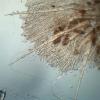
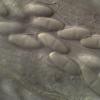
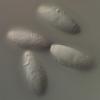
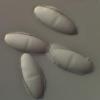

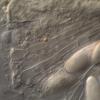
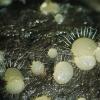

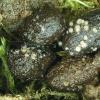

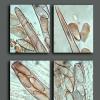
 Comparison-size-of-spores-Lasiobolus-0001.doc
Comparison-size-of-spores-Lasiobolus-0001.doc